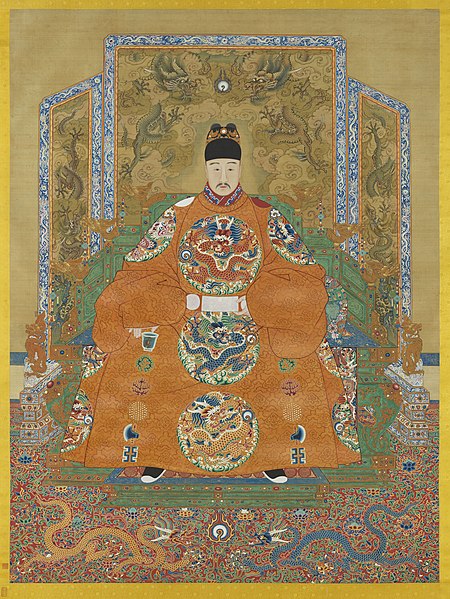The Wanli Emperor, also known by his temple name as the Emperor Shenzong of Ming (明神宗), personal name Zhu Yijun (朱翊鈞), art name Yuzhai (禹齋), was the 14th emperor of the Ming dynasty, reigned from 1572 to 1620. He succeeded his father, the Longqing Emperor. His reign of 48 years was the longest among all the Ming dynasty emperors. "Wanli", the era name of his reign, means "ten thousand calendars".
Palace portrait on a hanging scroll, kept in the National Palace Museum, Taipei, Taiwan
Zhang Juzheng (1525–1582); during the first ten years of the Wanli Emperor's reign, he played a crucial role as the emperor's teacher and de facto ruler of China due to the emperor's young age. His decisive foreign and economic policies brought one of the most successful periods for the Ming dynasty. He contributed to the centralization of administration, limited various privileges, and revised exemptions from land taxes. However, after Zhang's death in 1582, many of his reforms and policies were abolished, and in 1584, his family was stripped of their accumulated wealth and assets.
The Wanli Emperor in his middle age
Golden crown (replica) excavated from the Dingling Mausoleum
The Longqing Emperor, also known by his temple name as the Emperor Muzong of Ming (明穆宗), personal name Zhu Zaiji, art name Shunzhai (舜齋), was the 12th emperor of the Ming dynasty; he reigned from 1567 to 1572. He was initially known as the Prince of Yu (裕王) from 1539 to 1567 before he became the emperor. He succeeded his father, the Jiajing Emperor. "Longqing", the era name of his reign, means "great celebration".
Palace portrait on a hanging scroll, kept in the National Palace Museum, Taipei, Taiwan
Portrait of the Longqing Emperor
Tomb of the Longqing Emperor







